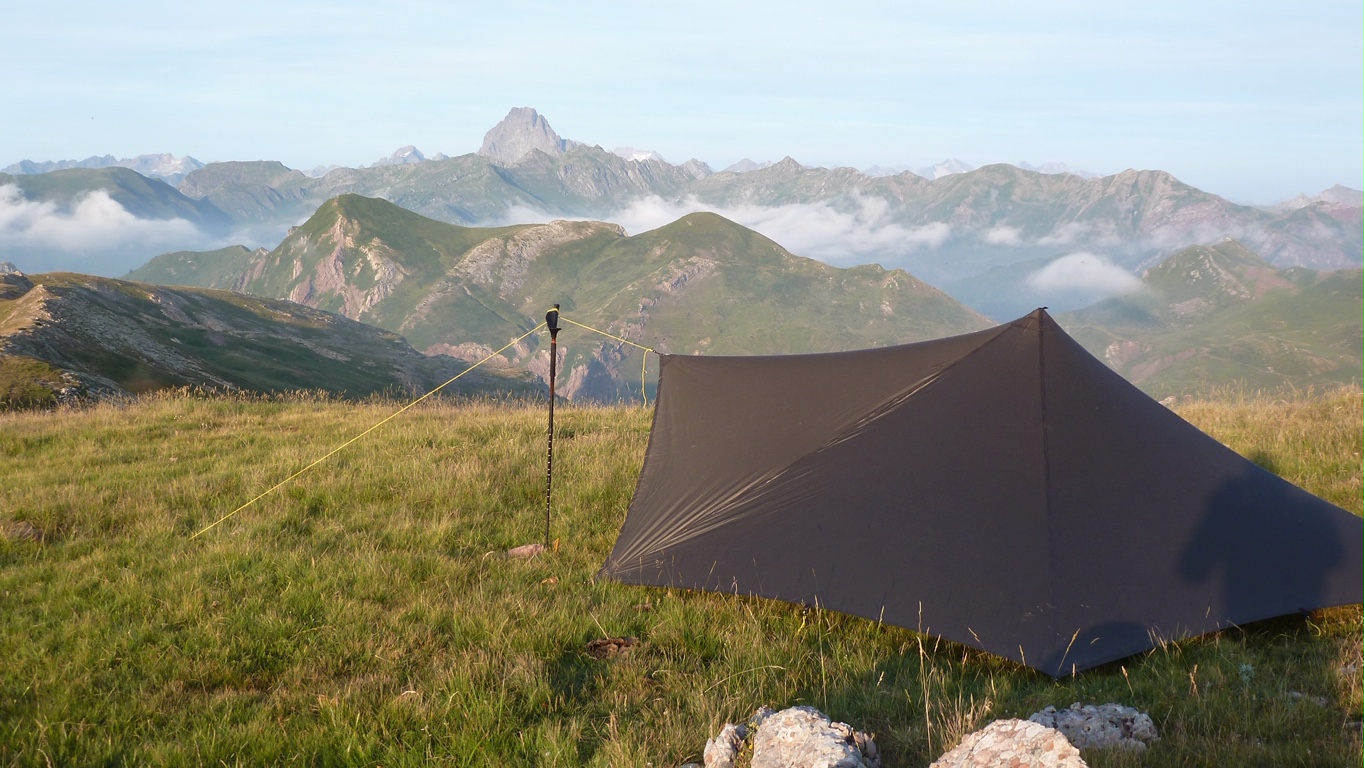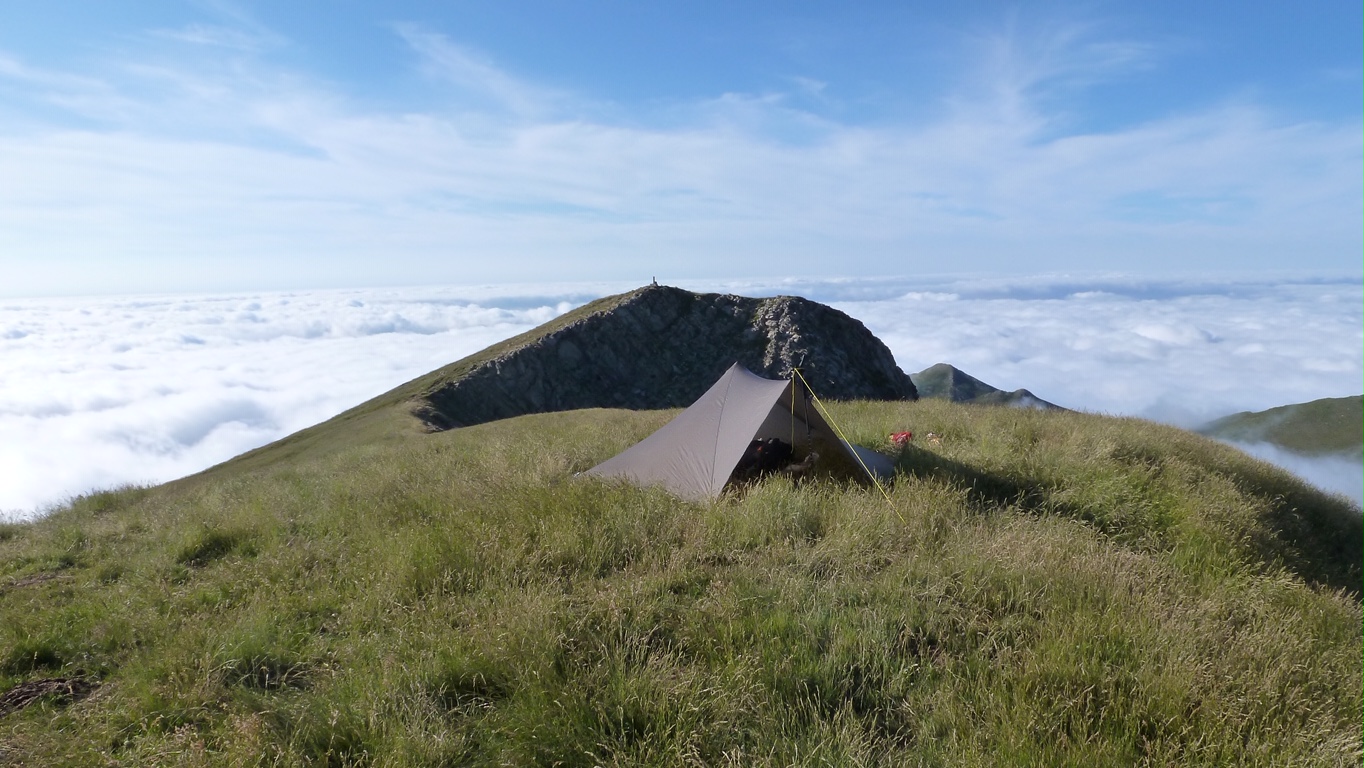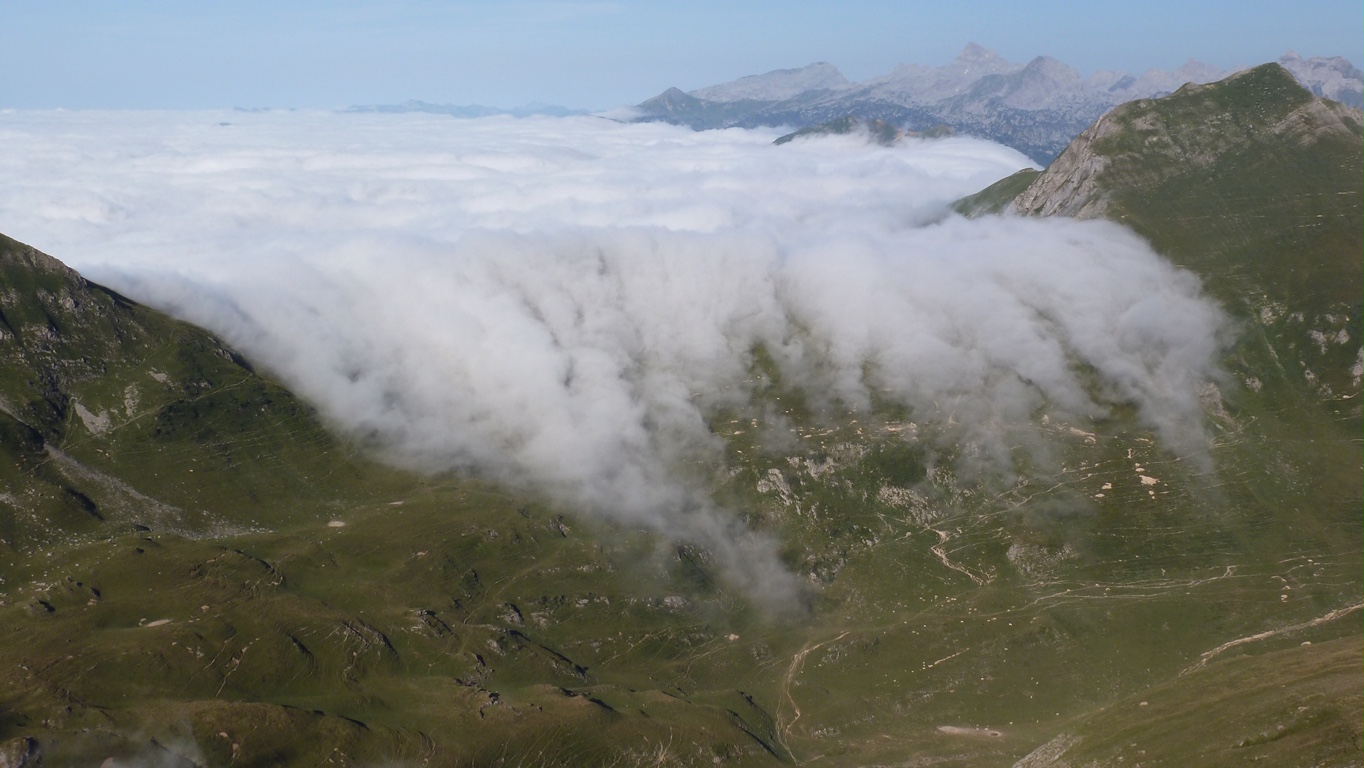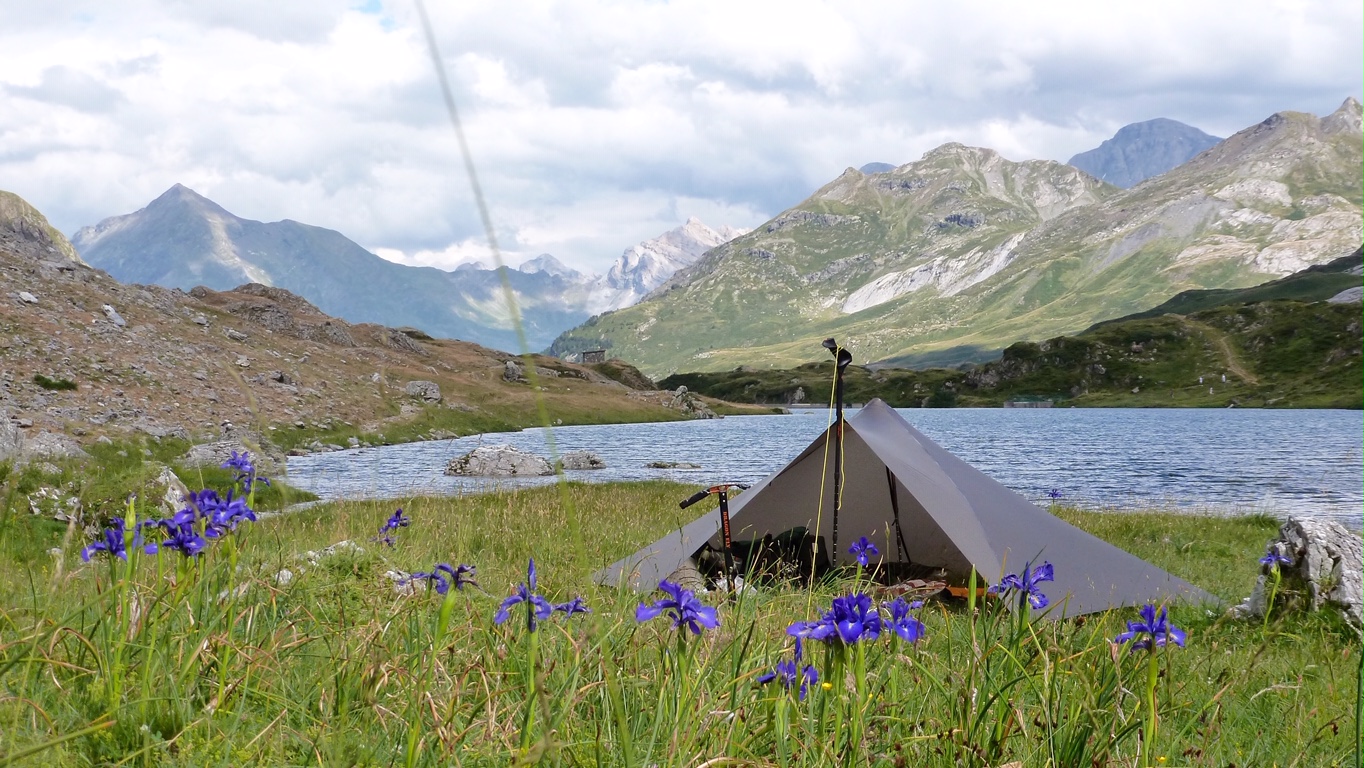Topic
Episode 13 | Tent-bound in a Storm
Forum Posting
A Membership is required to post in the forums. Login or become a member to post in the member forums!
Home › Forums › Campfire › Editor’s Roundtable › Episode 13 | Tent-bound in a Storm
- This topic has 13 replies, 5 voices, and was last updated 2 years, 4 months ago by
 Murali C.
Murali C.
-
AuthorPosts
-
Jul 8, 2019 at 5:36 pm #3601142
Companion forum thread to: Episode 13 | Tent-bound in a Storm
In this episode, Ryan offers some practical guidelines for managing wet gear, condensation, and camp chores if you have to be holed up in a tent during a prolonged period of inclement weather.
Jul 8, 2019 at 11:51 pm #3601177A good review of wet weather camping. Thanks!
Jul 10, 2019 at 7:56 am #3601379Great overview, I learned a few things.
A few more tips especially for single-wall tents:
- Avoid contact with wet tent walls to keep you and your gear dry. You might need a shelter with more headroom and interior space, walls that don’t impede movement, and doors designed to reduce contact getting in and out. Or even a double-walled tent.
- Think of your tent as a clean sanctuary, and avoid bringing any mud inside. It spreads rapidly and makes life much less pleasant.
- Keep a pair of warm, dry, clean sleeping socks as dry and clean as possible. You’ll be much happier.
- Pitch your tent to promote wind flowing through – aim your biggest vents into the wind.
- Wipe condensation off the inner walls of single-wall tents with a sponge or microfiber pack towel. Be sure to squeeze excess water completely outside the tent.
- Wet gear in a vestibule still adds moisture inside many tents.
- Avoid steaming food or drink inside the tent. Cook, eat, and drink hot liquids elsewhere if possible, like under another shelter or tree. Consider a group cooking/hangout tarp.
- Don’t freak out about condensation on your down sleeping bag, quilt, or puffy. Most modern, high-quality down gear is very water-resistant. It’s still better to keep stuff as dry as possible.
- If you hear or see a “slow” leak – don’t roll over and go back to sleep, deal with it now! Slow leaks all night long can create big puddles and problems.
- Before you pack up, wipe moisture off your gear with a sponge or pack towel. Packing wet gear only makes it wetter by forcing water into previously dry places.
- Learn weather patterns, and time your tent setup and breakdown for breaks in the rain. On one trip, everyone else put up tents in the rain as soon as we got to camp. I knew the rain would stop for a while just before sunset, so I waited.
— Rex
Jul 10, 2019 at 9:44 am #36013861. Yes it’s interesting how much water gets onto a tent. Some years ago I walked the HRP from Atlantic to Med using a sil nylon Trailstar. One night at altitude I ended up in cloud/mist , and the tent was drenched outside and inside, although there was no actual rain.
In the morning I wiped all services in and out with a sponge, and squeezed it out into my Evernew pot which has ml markings. In all I collected 600 ml / 21 oz of water, more than the weight of the tent. It was still not completely dry, and presumably the material had absorbed some moisture too, so the total weight of water was even more.
I think Ryan forgot to mention wiping down with a sponge, because I first got the tip from him. Thanks Ryan!
2. Regarding walking around outside the tent, if you are liable to cut your feet, then surely the stuff sacks on your feet are going to get damaged too. Better to put your shoes on over the top, or just carry light bread bags to wear in your shoes. I then pack my tent in the bags.
3. I seem to be in the minority regarding sleep socks mentioned here. Even thin ones make my feet too hot, so that’s a few ozs less to carry. That’s also one reason I changed to a quilt – so I can more easily cool my feet.


You can see that mist:

 Aug 13, 2019 at 6:31 am #3605857
Aug 13, 2019 at 6:31 am #3605857Avoid steaming food or drink inside the tent. Cook, eat, and drink hot liquids elsewhere if possible, like under another shelter or tree. Consider a group cooking/hangout tarp.
Could be difficult in a howling storm, couldn’t it?
My wife and I always cook and eat and wash up inside the tent. It is always amusing to watch the steam head out of the downwind vent or window.What to do in a howling storm in the snow when you need to go to the loo? Many is the time when venturing outside the tent in our dry clothing in Alpine conditions was simply not a realistic option. As I did mention in ‘When Things Go Wrong’, I just dug a deep hole in the snow inside the vestibule, and then filled it in. There was no smell at all.
Cheers
Oct 4, 2022 at 2:16 pm #3761266What is the proper technique for setting up a single walled tent in the rain? I fear some water could get inside while I extend my trekking poles.
Oct 4, 2022 at 5:17 pm #3761273That is why a tarp is so good……set up tarp, get under the tarp with your rain gear on. Remove your wet clothes etc and then put the groundsheet and get on the groundsheet and unpack….
Oct 5, 2022 at 7:11 am #3761281I recently returned from a Sierra trek where I had rain on 3 of the first 5 days, on 2 of them it was raining when I set camp, and 1 also when I broke camp. My shelter was a tarp, my raingear a poncho. Despite 53 years of backpacking this was just my 2nd experience setting camp in the rain. I stayed drier this time than my first.
With poncho on I doffed my pack, pulled the tarp and stake sack from the external pocket, then reshouldered the pack. I laid the tarp out on the damp-ish ground (no puddles), set it in an A-frame, then again doffed my pack. I set the pack under the tarp and then crawled under. After doffing the poncho and setting it to the side, as @Murali described lay out my ground cloth, pad, sleeping bag, etc. and rode through it.
I cooked from the tarp, the pot/stove just out of the shelter and used a windshirt for the quick middle of night pee runs in the rain.
In breaking camp, did the exact reverse. The tarp went into the external pocket wet. Fortunately I had dry periods where I could dry the tarp and didn’t have to deal with days on end rain. Overall I was pretty happy with the result.
Oct 5, 2022 at 8:16 am #3761284I wish Ponchos had pockets to keep the tarp which can then eliminate removing the backpack and retrieving the tarp:-) and next time, I probably would keep the backpack under the tarp while I setup the tarp in rain – that is another way to keep the backpack dry while settinp up the tarp. I didn’t do that last time….
Oct 5, 2022 at 2:24 pm #3761303What size tarps do Murali and Steve use?
Oct 5, 2022 at 4:22 pm #3761306I have an MLD Grace Tarp Duo in DCF. 9.5’ ridge line, 8.5’ across the front, and 7.5’ across the rear.
Oct 5, 2022 at 4:39 pm #3761309“That is why a tarp is so good……set up tarp, get under the tarp with your rain gear on. Remove your wet clothes etc and then put the groundsheet and get on the groundsheet and unpack….”
That’s what I occasionally do with floorless mid
Leave door open and cook to minimize condensation
61 inch center pole to provide enough headroom. And there’s a guyline opposite the door, at about head level, to provide headroom and minimize touching condensation on inside wall.
Oct 5, 2022 at 4:40 pm #3761310The Durston X tent would be good in the rain. Clever design to provide headroom to minimize touching inside clondensation
Oct 5, 2022 at 6:58 pm #3761324I use a Zpacks Altaplex tarp (they stopped offering the tarp and just have the tent version now). Durston’s X-mid or any of the MLD ones are all tarps where you can attach various inners after you set up the tarp.
-
AuthorPosts
- You must be logged in to reply to this topic.
Forum Posting
A Membership is required to post in the forums. Login or become a member to post in the member forums!
LAST CALL (Sale Ends Feb 24) - Hyperlite Mountain Gear's Biggest Sale of the Year.
All DCF shelters, packs, premium quilts, and accessories are on sale.
Our Community Posts are Moderated
Backpacking Light community posts are moderated and here to foster helpful and positive discussions about lightweight backpacking. Please be mindful of our values and boundaries and review our Community Guidelines prior to posting.
Get the Newsletter
Gear Research & Discovery Tools
- Browse our curated Gear Shop
- See the latest Gear Deals and Sales
- Our Recommendations
- Search for Gear on Sale with the Gear Finder
- Used Gear Swap
- Member Gear Reviews and BPL Gear Review Articles
- Browse by Gear Type or Brand.







